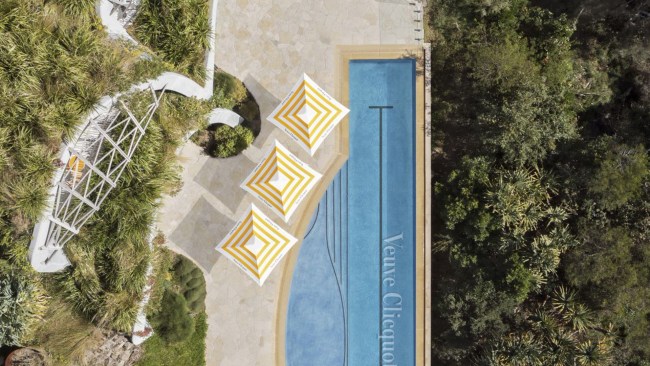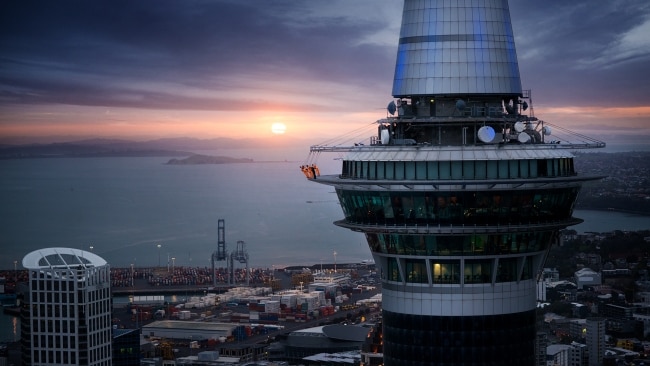Hotel Kurrajong, Canberra: slice of history; Ben Chifley’s address
Canberra’s historic Hotel Kurrajong was good enough for prime ministers and is still worth a visit today.

Cutting-edge developments are adding lustre to the national capital’s once-staid heritage appeal.
Canberra has always been a focus of national identity, visitors drawn by the National Gallery, Australian War Memorial, High Court and other august repositories of artistic and political life and history. Now, vibrant developments such as the stylish village-like precinct of New Acton, and Canberra Airport, which has emerged like a sleek launch pad from its chrysalis of scaffolding (it will “go international” this September), are giving Canberra’s original backstory a new context.
Hotel Kurrajong, a building central to the history of Australian government, emerged from the work shrouds of its own comprehensive makeover in late 2014. The hotel is a concrete example of Canberra’s genius in bringing the past to life. When Canberra was a vista of sheep paddocks and sweeping grasslands, a national capital in theory alone (the region was chosen in 1908, after years of debate), a survey camp arose on the slopes of Kurrajong Hill.
Soon federal parliament was transported from Melbourne and, within 20 years, landmarks such as the Capitol Theatre Manuka (since demolished), Duntroon Military College, Cotter Dam, Parliament House, The Lodge and Government House were built and, to house parliamentarians, Hotel Canberra and Hotel Kurrajong (known as Hostels 1 and 2). Parliament House (the “Provisional Parliament House”, now Old Parliament House) filled its role from 1927 for the next 61 years (through World War II and the Great Depression); the new Parliament House was opened in 1988.
Hostel No 2 (Hotel Kurrajong) was unofficial Australian Labor Party HQ. Hostel No 1 (opened a year earlier and favoured by the conservatives) is now the Canberra Hyatt. Both “hostels” had elegant bones in a pavilion style with deep verandas, courtyards and gardens now redolent of early-era Canberra.
Hotel Kurrajong and Old Parliament House have a kind of twin history: they opened within a year of each other, both were designed by chief government architect John Smith Murdoch, and both were daily home-away-from-home for early leaders.
Walking to Old Parliament House from the Hotel Kurrajong, where I’m staying in one of the restyled heritage rooms, I find myself following in former prime minister Ben Chifley’s wake, probably his actual footsteps. Just before reaching the house, two figures loom on the footpath in the form of intriguingly lifelike, bronze sculptures. It’s Chifley and his predecessor as prime minister, John Curtin, in sober suits and hats, one bespectacled, the other sporting a pipe. They confer as they stroll from the hotel to their day at the house.
Chifley became prime minister when Curtin died, in 1945. Curtin had moved to The Lodge on gaining power but Chifley stayed on in his small Kurrajong annexe apartment as PM, spending weekends at his Bathurst home. He occupied these rooms for 11 years, as treasurer, prime minister and then in opposition, and was taken from here to Canberra Hospital after a fatal heart attack in 1951; the record is unclear but he might even have died in his hotel bedroom.
Chifley’s suite of rooms at the end of the upper floor has been spruced up but kept much as he knew them and are part of Hotel Kurrajong’s accommodation inventory.
The layout of the 147-room hotel (26 rooms in the heritage wing) retains its pavilion-style corridors, with original pictures and photographs, rooms off to either side. Chifley’s Bar & Grill and public areas opening from the ground floor entrance are gleaming echoes of the original, channelling modern period elegance with black japanned timber stair banisters (leading to Chifley’s suite), wooden venetians, woven rattan lightshades and turquoise accents.
While the hotel brings the past stylishly into the present, across at Old Parliament House, a preserved-in-aspic period aura is fostered and celebrated. The Museum of Australian Democracy opens a window on government life (there’s public entry, plus regular talks and guided tours), from the prime minister’s quarters to the press gallery. Admire heritage objects and documents, models of the house, and the majestic, intricately carved oak speaker’s chair, a gift and replica of Westminster’s 19th-century speaker’s chair, which was destroyed in World War II bombings.
In a then infrastructure-sparse capital, Parliament House had its own post office (with banking), dining rooms, bar and snooker room. During Canberra’s prohibition years (who knew?), parliamentarians would sign in guests from the non-existent Queensland upper house for Sunday drinks. In one corridor, a (hastily adapted) women’s toilet features a boxed-in urinal and a wall poster (“Stand Up for Women’s Rights!”) reporting that when Enid Lyons (Representatives) and Dorothy Tangney (Senate) were elected to Parliament in 1943 they had to use the staff toilets (toilets for members, senators and officials were male-only, despite women being eligible for election since 1902). The “Woman’s Place is in the House” timeline here (with Judy Horacek cartoon), together with the longstanding Aboriginal Embassy on the grass opposite, are part of parliamentary history.
Apart from furnished historic rooms, exhibitions include 2015’s best political cartoons (Between the Lines), the 800th anniversary of the Magna Carta, the Queen’s 1954 visit, Menzies (curated by John Howard), the gold-braided Dress Code: Empire and rainbow-bright children’s Play Up.
Before flying out I visit Canberra Airport’s stunning new Vibe Hotel (an arm of TFE Hotels, co-owner with NRMA of Hotel Kurrajong). It’s an airport hotel like no other.
Canberrans will come here and travellers will linger. Rooms circle a soaring central atrium that looks down through its six storeys to a spacious ground-floor. Earth-red carpets and low timber walls mark out individual pods, like fairy rings in the desert, with circular leather banquettes (one wrapping a central fireplace) and clusters of leather armchairs or small tables and chairs scattered around a bar. Lunch at Helix Bar & Dining is a good way to fly, especially in truffle season, another Canberra leap forward.
Judith Elen was a guest of TFE Hotels.



To join the conversation, please log in. Don't have an account? Register
Join the conversation, you are commenting as Logout